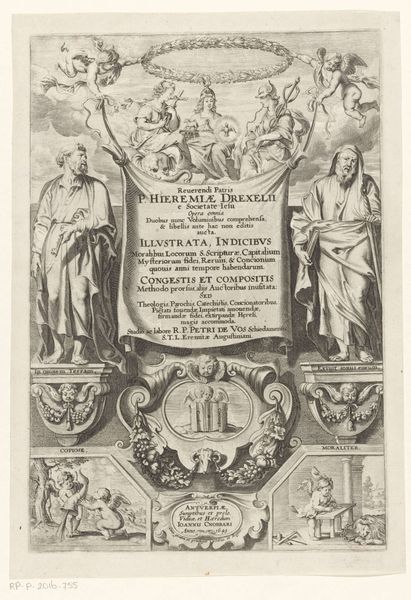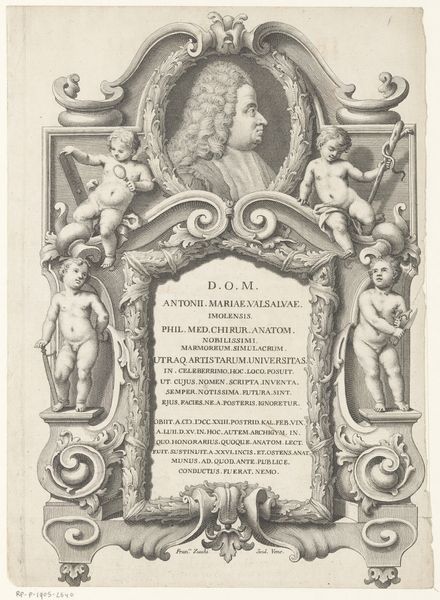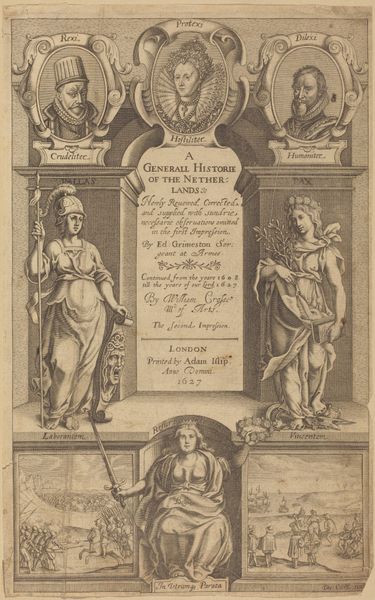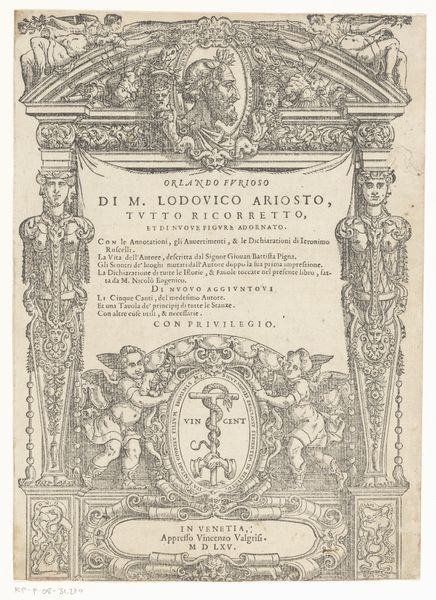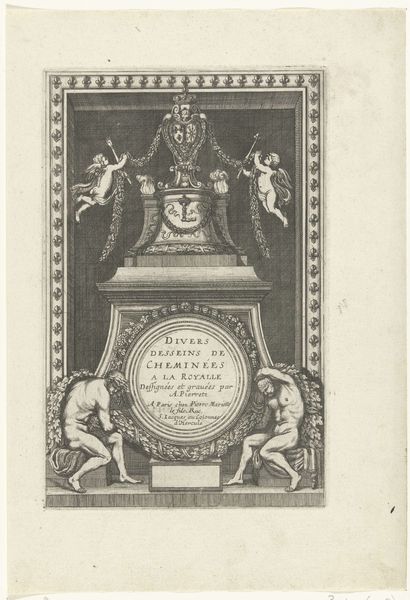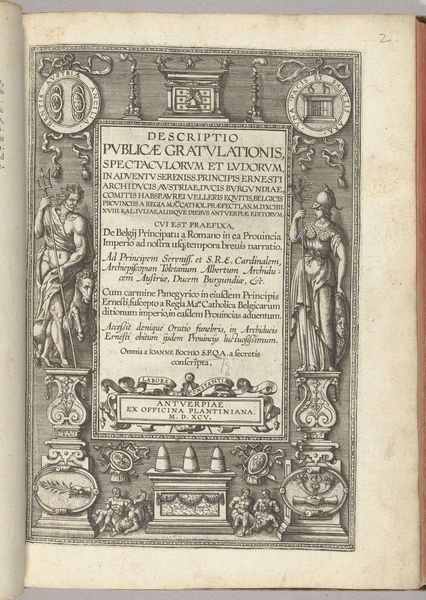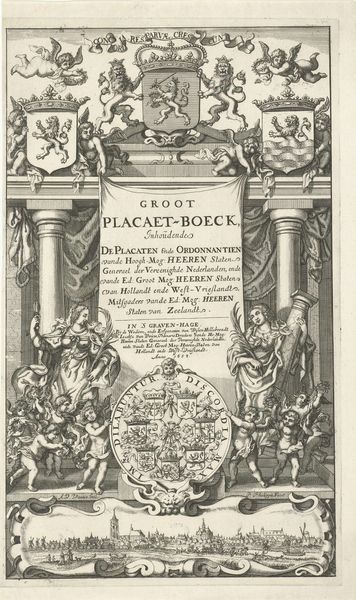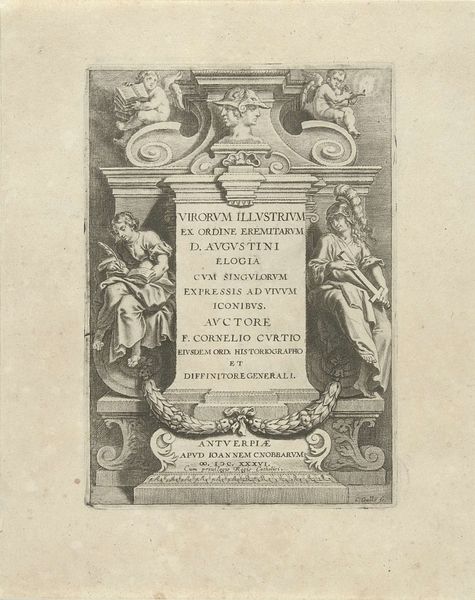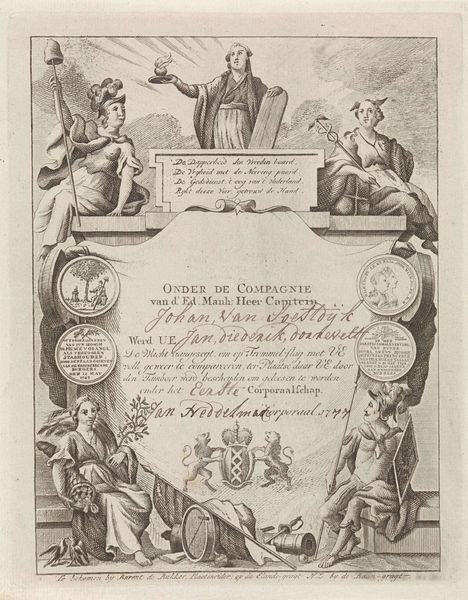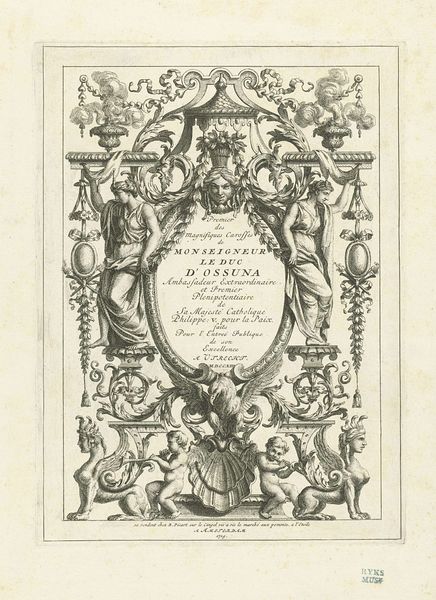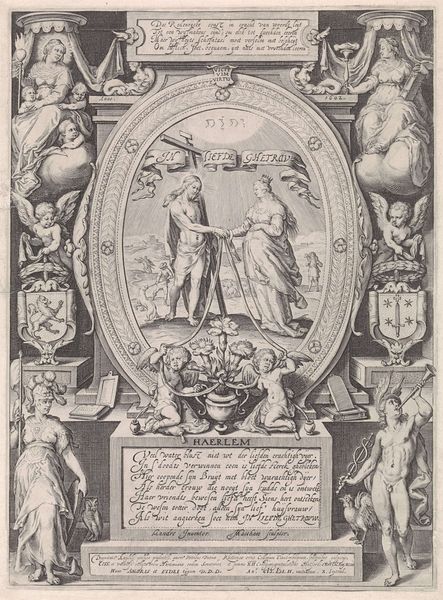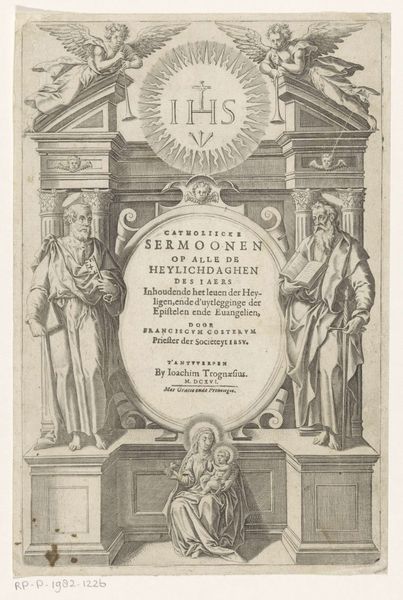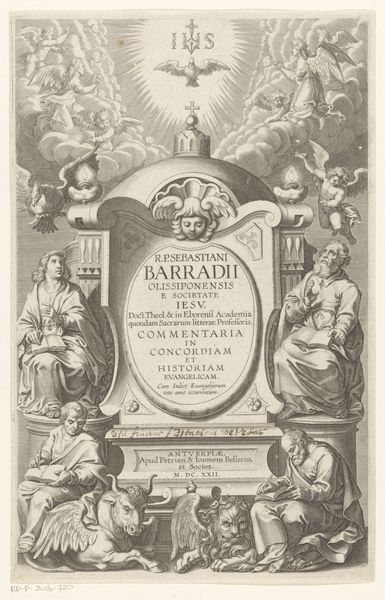
print, engraving
#
portrait
#
allegory
#
baroque
# print
#
cityscape
#
history-painting
#
engraving
Dimensions: height 335 mm, width 211 mm
Copyright: Rijks Museum: Open Domain
Curator: This engraving, titled "Omlijsting met Minerva en vrouwelijke personificatie", dates back to 1602. Editor: The detail is just remarkable! My first thought is of controlled power—a very intentional composition designed to convey authority. Curator: Exactly. We're looking at a print—specifically an engraving. The precise lines are critical here, demonstrating mastery over the material, suggesting skilled labour. Note the heraldic devices and personifications flanking what looks like a dedicatory inscription to Albert and Isabella. This piece showcases the complex interweaving of text and image, functioning as both a declaration and an aesthetic object. Editor: Those allegorical figures, like Minerva, and the landscape backdrop indicate clear gender roles at play. We have a classical reference grounding these powerful people historically, as well as a depiction of land over which to claim power. The medium and its accessibility surely had an influence. Do we know where this piece was originally distributed, or who its original audience was? Curator: Antwerp. You see the imprint at the bottom. Given the context of its production and its purpose to celebrate and frame a dedicatory text for the Habsburg rulers, this would probably be found on a wall of a royal residence, made for a rather exclusive viewership initially, now more broadly consumable. It demonstrates the printing practices that enabled propaganda for empire building. Editor: Absolutely, understanding that relationship between power, representation, and access is key here. What message it sends versus who is given access is what helps tell a richer narrative. Curator: Precisely. By tracing the processes through which engravings are produced, disseminated, and received, we can discern so much about the labor, economics, and ideology intertwined within this print. Editor: Thanks to looking at the work and the hands and machines behind it we have more perspective. I find the composition particularly telling now, that we’ve touched on its purpose. Curator: And, in turn, analyzing social impact prompts material curiosity. An exercise in context makes one view an artwork through fresh eyes!
Comments
No comments
Be the first to comment and join the conversation on the ultimate creative platform.
